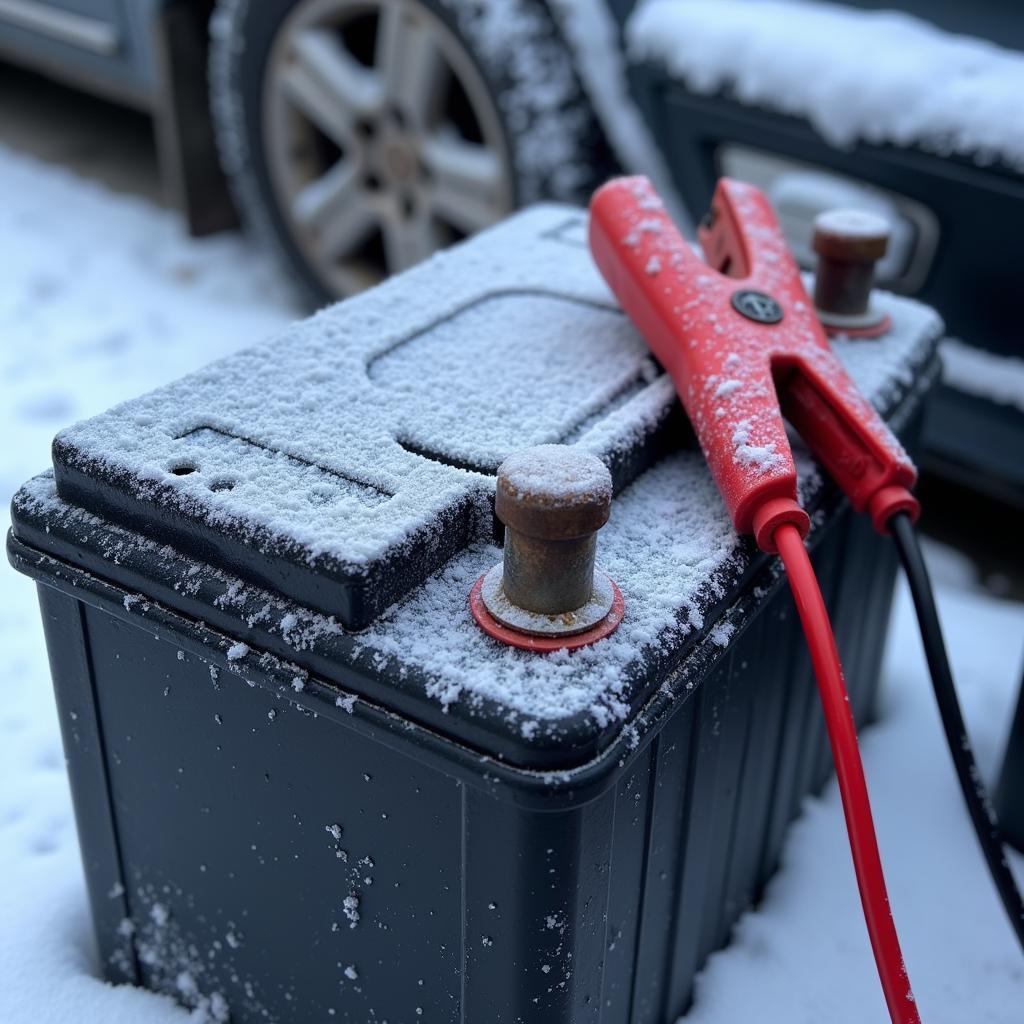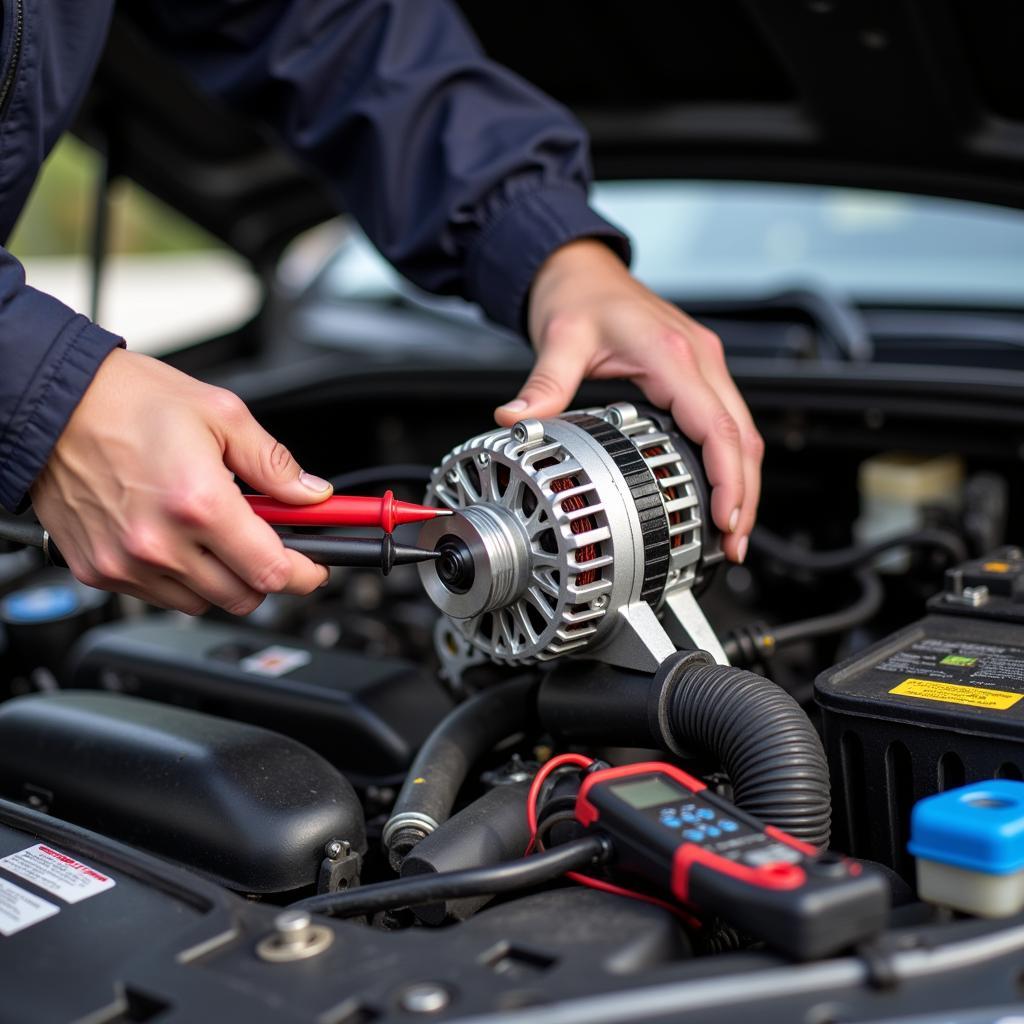Canada’s cold winters and hot summers can be brutal on car batteries and other starting components, leaving drivers stranded with a vehicle that won’t start. If your car is experiencing this frustrating “Canada Problem Cars Will Not Start” issue, this guide will help you diagnose and possibly fix the problem yourself.
Common Reasons Why Your Car Won’t Start in Canada
There are several reasons why your car might refuse to start, especially in Canadian climates. These range from simple fixes to more complex mechanical issues. Understanding the potential causes is the first step to getting back on the road.
Battery Blues: The Usual Suspect
The most common culprit is a dead or weak battery. Extreme temperatures, both hot and cold, can significantly impact battery performance. Cold weather thickens the engine oil, making it harder for the battery to turn the engine over. Conversely, hot weather can evaporate battery fluid, leading to internal damage and reduced capacity.
- Check for corrosion on the battery terminals. Clean them with a wire brush and baking soda solution if necessary.
- Try jump-starting the car. If it starts, your battery likely needs replacing.
- Consider a battery load test to determine the battery’s health.
 Dead Car Battery in Canadian Winter
Dead Car Battery in Canadian Winter
Starter Motor Struggles: A Clicking Sound?
If you hear a clicking sound when you turn the key, it could be a sign of a failing starter motor. The starter motor is responsible for cranking the engine, and if it’s faulty, your car won’t start.
- Listen for a rapid clicking sound when turning the key. This indicates a low battery or a faulty starter solenoid.
- A single click or no sound at all might suggest a completely dead battery or a problem with the starter motor itself.
Alternator Issues: The Battery’s Best Friend
The alternator recharges the battery while the engine is running. A faulty alternator can prevent the battery from charging properly, eventually leading to a no-start situation.
- Dim headlights or flickering interior lights are often early warning signs of alternator problems.
- A warning light on the dashboard that resembles a battery symbol can indicate an alternator issue.
 Car Alternator Inspection by Mechanic
Car Alternator Inspection by Mechanic
Fuel System Failures: Is Your Tank Empty?
While it might seem obvious, a low fuel level can indeed prevent your car from starting. Other fuel system issues, such as a clogged fuel filter or a faulty fuel pump, can also cause starting problems.
- Check your fuel gauge. Make sure you have enough gas in the tank.
- If you suspect a fuel pump problem, listen for a humming sound near the fuel tank when you turn the key to the “on” position. The absence of this sound might indicate a faulty fuel pump.
Ignition System Problems: The Spark of Life
The ignition system provides the spark needed to ignite the fuel in the engine cylinders. Problems with the ignition switch, ignition coil, or spark plugs can prevent your car from starting.
- If your car cranks but doesn’t start, it could be an ignition system issue.
- A faulty ignition switch might also prevent power from reaching other components, making it seem like a dead battery.
Troubleshooting Your Canada Car Starting Problem
Here’s a step-by-step guide to help you diagnose why your car isn’t starting:
- Check the Obvious: Ensure the car is in park (or neutral for manual transmissions) and that the parking brake is engaged.
- Listen Carefully: Turn the key to the “on” position without starting the engine. Listen for any unusual sounds, such as clicking or humming.
- Inspect the Battery: Check for corrosion on the battery terminals. Clean them if necessary. Try jump-starting the car.
- Consider the Starter Motor: If you hear a clicking sound when you turn the key, suspect the starter motor or solenoid.
- Think about the Alternator: Dimming lights or a battery warning light can suggest alternator problems.
- Don’t Forget the Fuel System: Ensure you have enough fuel. If you suspect a fuel pump issue, listen for a humming sound near the fuel tank.
- Investigate the Ignition System: If the car cranks but doesn’t start, the ignition system might be the culprit.
Canada Problem Cars Will Not Start: Conclusion
Experiencing car starting issues in Canada, especially during extreme weather, is a common problem. Understanding the potential causes, from a weak battery to a faulty ignition system, is crucial for effective troubleshooting. By following the steps outlined above, you can often identify the root cause and potentially fix the problem yourself. However, if you are unsure or the problem persists, seeking professional help is always recommended.
For expert advice and assistance, contact AutoTipPro at +1 (641) 206-8880. Our office is located at 500 N St Mary’s St, San Antonio, TX 78205, United States, but we offer remote diagnostic support. Don’t let a car that won’t start keep you from enjoying the Canadian landscape.
Expert Insight:
- “In Canada, always carry booster cables, especially in winter. A dead battery is the most frequent service call we get,” says John Smith, Lead Mechanic at Canadian Auto Repair.
- “Preventative maintenance is key. Regular battery and alternator checks can save you from a lot of headaches,” advises Emily Carter, Automotive Engineer at Toronto Auto Solutions.
FAQ
- Why is my car more likely to not start in cold weather? Cold temperatures thicken engine oil, making it harder for the battery to turn the engine.
- What does a clicking sound when starting the car mean? It usually indicates a weak battery or a faulty starter motor.
- How can I test my car battery? A battery load test is the best way to determine its health.
- What are the signs of a bad alternator? Dim headlights, flickering interior lights, and a battery warning light are common indicators.
- Can a bad fuel pump prevent my car from starting? Yes, a faulty fuel pump can interrupt the fuel supply to the engine.
- What should I do if my car cranks but won’t start? It could be an ignition system issue. Check the spark plugs, ignition coil, and ignition switch.
- Who should I contact if I can’t fix the problem myself? Reach out to a qualified mechanic or a reputable auto repair shop.




Leave a Reply